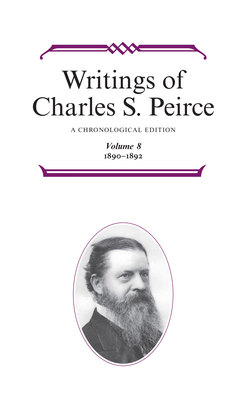Читать книгу Writings of Charles S. Peirce: A Chronological Edition, Volume 8 - Charles S. Peirce - Страница 35
Оглавление21
[Notes on Consciousness]
| c. 1890 | Houghton Library |
Utterly incredible that consciousness is a property of a particular mechanical contrivance or chemical combination.
The doctrine of “ultimate facts,” altogether illogical.
So that the only thing left is to say it is diffused throughout the universe.
But in that case of what nature is the unity of consciousness? And why cannot this continuous consciousness be in immediate connection?
First let us see what we can make out by considering the nature of conscious nerve matter. It has the general properties of nerve matter. Two states a calm and an excited. In the excited state protoplasm generally has a tendency to contract; but this is little seen in nerve matter. Excited state brought on by any disturbance. Propagated through the whole mass. Growth. This is stimulated by exercise which is perhaps necessary to it. Excessively complex & unstable chemical constitution. Great & endless variety of kind which growth keeps up & conserves. Takes habit.
Any way you can look upon these facts, the excited state (which is the conscious state) is a state of derangement, disturbance, disorder.
Shall we say then that perfect order and law is dead, and that disorder and irregularity is everywhere conscious?
Quality of feeling.
Shall we say a gas has feeling? Perhaps so but this is not a disorder propagating & spreading itself. It is not coordinated. Feeling is a small thing in itself.
Now this question arises. If a lot of balls in disorderly movement are conscious, where does that consciousness reside? What are the limits of its unity?
